Space 🪐 | Event Horizon, Pandorum, Sunshine, & Life
Floating free, trapped inside.
I’d been thinking about a film that terrified me as a kid—Event Horizon—and it spurred me to put myself through a little festival of horror movies set in space. It’s a fascinating, mixed-bag of a subgenre, full of watchable, strange films, many of them box office under-performers. In addition to Event Horizon (1997), I watched Pandorum (2009), Sunshine (2007), and Life (2017). (Thank you to the "HORROR" community on Twitter for recommendations—more than I could watch for this piece.) Spoilers for all ahead. Each is worth a watch, but Event Horizon and Sunshine (the two I'd seen before) both really hold up. Event Horizon is still scary and is something of a model of hybrid genre filmmaking—its “ship-in-peril” sci-fi story meshing neatly with its haunted house story (haunted ship to be perfectly accurate). Sunshine’s a smart thriller with a perfect cast, and its molten, gold-hued visuals do something beautiful and innovative with outer space imagery.
Content warning: Suicide.
There’s a scene in Event Horizon in which the Kathleen Quinlan's Peters finds herself alone at a desk when she hears a strange noise behind her. She turns, scans the room, sees no one. She calls out for D.J. (Jason Isaacs), but he isn’t there. Frightened, she picks up a blade and makes her way through the room in the direction of the sound. Something moves under a canvas. Pulling it back, she’s startled to see her son. He shouldn’t be there. He’s far away at home. And there are wounds all over his legs. She’s horrified, distraught, then shocked by D.J. arriving behind her. When she looks back down, her son is gone. He was some kind of vision.
If you know nothing about the film, the imagined setting for the scene as described might be an old house. It’s textbook haunted house material. So it might be something of a surprise that Peters is in a metal-clad chamber illuminated by glowing white and green lights. There are monitors on her desk, wires streaming from a row of machines, and spinning, illuminated devices in the background. It’s not even dark in the room. Event Horizon was conceived as a haunted house movie in space and space is where we are. Not the shadowed corridors of a decaying house but the glowing, humming interior of a spaceship. The film tells a story unmistakably drawing from the haunted house tradition, but space, like any setting, isn’t just a visual backdrop. While Event Horizon's setting costs it some of the traditional haunted house's feelings, visuals, and themes, it also offers an environment with its own set of possibilities. Like other horror films set in space, Event Horizon becomes something inextricable from its distinct setting. Space shapes the horror and the horror shapes space.
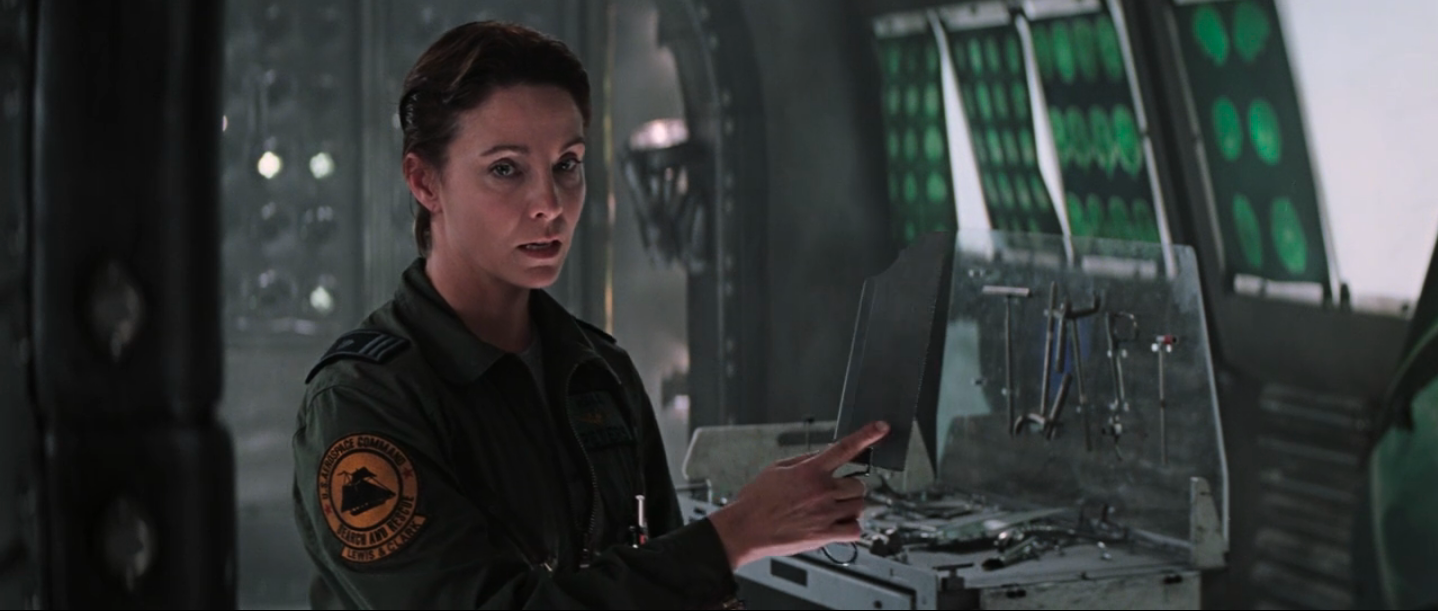
Characterizing space as a setting isn’t easy. Space is no place—a void—but it’s also a stream of places, as the space traveller is always moving, encountering new things. A spaceship surrounded by space is something of a blank canvas. It has a “cabin in the woods” quality: setting up a contained environment and a fixed set of characters, all surrounded by a sweep of inhospitable terrain concealing an endless array of potential horrors.
Space horror cannot, however, escape the bounds of science fiction. Horror and sci-fi have a shared, overlapping, interactive history, but space remains, most distinctly, one of sci-fi’s signature settings. Horror films set in space are horror-sci-fi hybrids. Sunshine is pure sci-fi for most of its runtime, tracking the mission of the the Icarus 2 space crew as they attempt to save human life on earth by launching a nuclear device into the dying sun. En route they discover and board the Icarus 1—the vessel of the mysteriously failed mission they’re following after. As four crew members explore the dusty ship, there’s a blast of some kind and the two vessels break apart, the airlock on Icarus 1 so damaged that Icarus 2 cannot dock again. They’re forced—with only one spacesuit between them, now losing oxygen to a breach from the blast, and with one man staying behind to operate the airlock—to attempt a jump through space to the Icarus 2. They line up the ships, open the hatch, and are blown out. But it doesn't go perfectly: one of them careens off course, freezing in space. It’s a sequence of a piece with what’s come before—taught, suspenseful set-pieces revolving around the technological, physical, and mental stresses of space travel.
But it takes on a different cast as the film continues. As it turns out, the Icarus 1 carried a remaining living passenger, a man named Pinbacker (Mark Strong) who has had a kind of Kurtz-like turn during his mission to the sun—becoming a crazed, megalomaniacal monster. God, he believes, has told him to let mankind die out. He's responsible for the failure of the Icarus 1. And the airlock was not destroyed as a result of an accident. It was sabotaged by Pinbacker. Sunshine enters slasher territory here, Pinbacker wreaking havoc on the Icarus 2. As they race toward the sun, he wounds and kills crew members and tries to destroy the ship for the rest of the film. The explosion that separated the ships becomes a moment of genre overlap. As we experience it, it’s another space accident. But once we meet Pinbacker, and understand his responsibility, it looks instead like the first of his kills. Those deaths, in retrospect, are slasher kills. It’s sci-fi one way, horror the other.
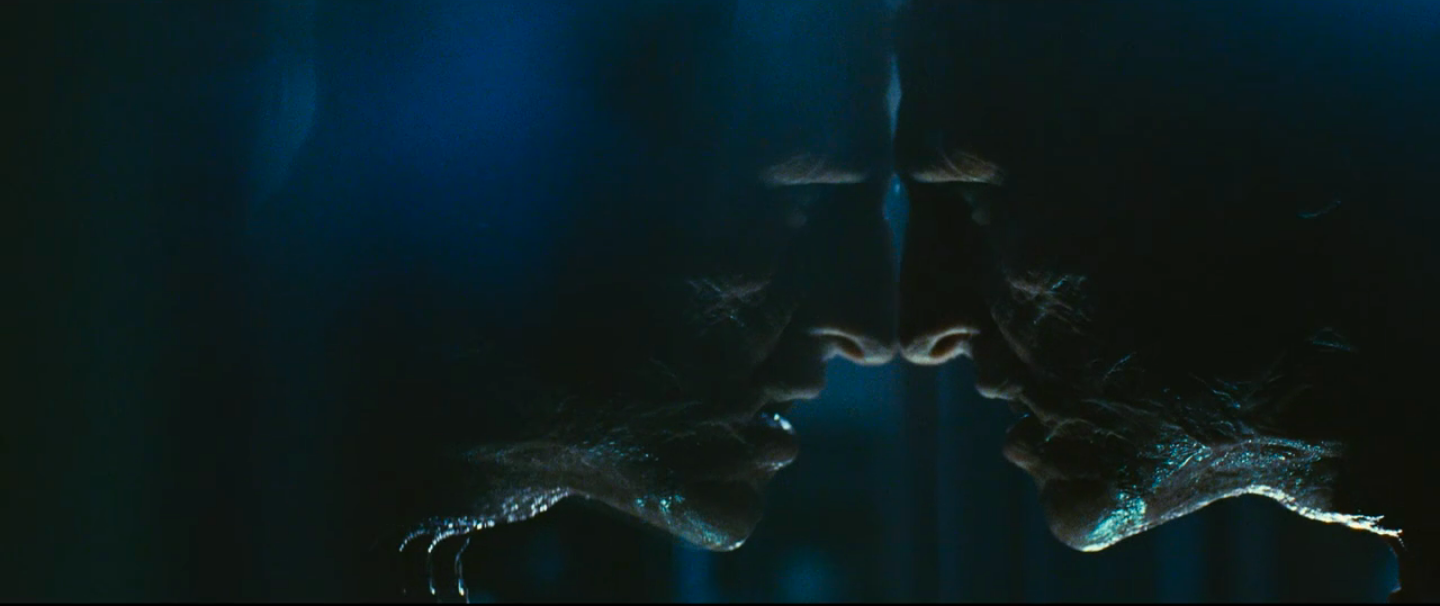
It might seem a little incongruous to put a “slasher” in space (although, of course, various horror franchises have gone to space, e.g. Jason X), but a fundamental property of space as a setting is that it’s full of possibility. It’s a frontier of human experience, a site of cutting edge science, an ever-changing drift of new environments. Event Horizon finds a haunted ship out of a Hell dimension. Sunshine finds a space-crazed slasher. Life finds a creature in Martian soil samples. And Pandorum finds its own creatures, though they’re not aliens, deriving instead from humans exposed to a “synthetic enzyme” meant to aid adaptation on a new planet. Space is an environment where the real unknown overlaps with the full, varied possibilities of science fiction. The potential for horror subgenres is vast.
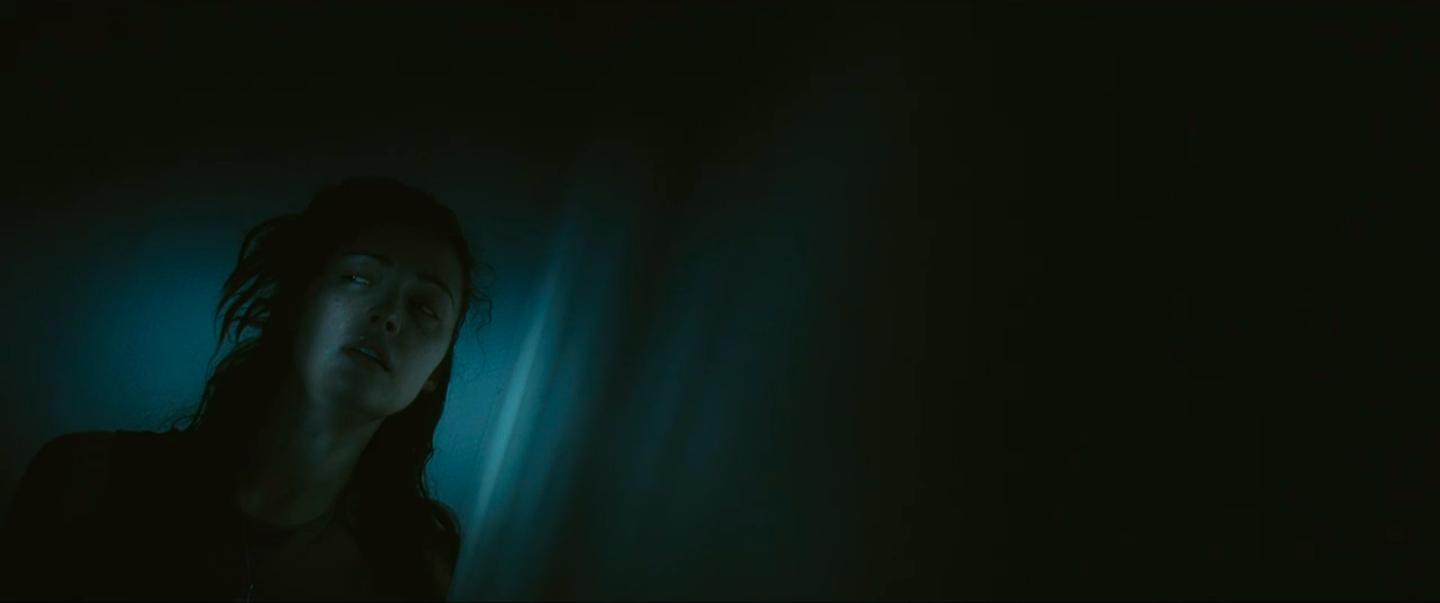
There’s freedom and possibility in space—anything can be out there—but there’s a pervasive claustrophobia too. In Life, after an alien life-form the crew’s discovered (and are studying on the International Space Station) latches onto Dr. Derry’s (Ariyon Bakare) probing glove, crushing his hand, the astronauts watch from behind a locked door—arguing about whether to enter—as he struggles, screams, and finally passes out. When the creature then escapes its container, and they watch it devour a lab mouse, Adams (Ryan Reynolds) opens the door with a “fuck this” and grabs Dr. Derry to push him out. As he does so, the creature grabs onto his leg and another crew member closes the door, shutting him in. Looking through the glass, Adams nods, understanding. As the film progresses, it’s all about containment, all about locked doors. But the crew is contained as much as the creature. In one scene, the creature finds itself outside the station and it searches desperately for a way in. The crew tries, unsuccessfully, to fire the various thrusters, whack-a-mole-like, as the thing attempts to crawl through them to get back inside. Later, they hole themselves up in one section and allow the rest of the station to depressurize in an attempt to kill the thing. The astronauts are consistently contained and trapped by the station, managing its features and systems as best they can. Its doors, walls, and windows might be the only things protecting them from the creature and from the void of space outside, but it defines the limits of their freedom, the limits of their lives, trapping them always, either in desperate, safe spaces, or inside with the creature.
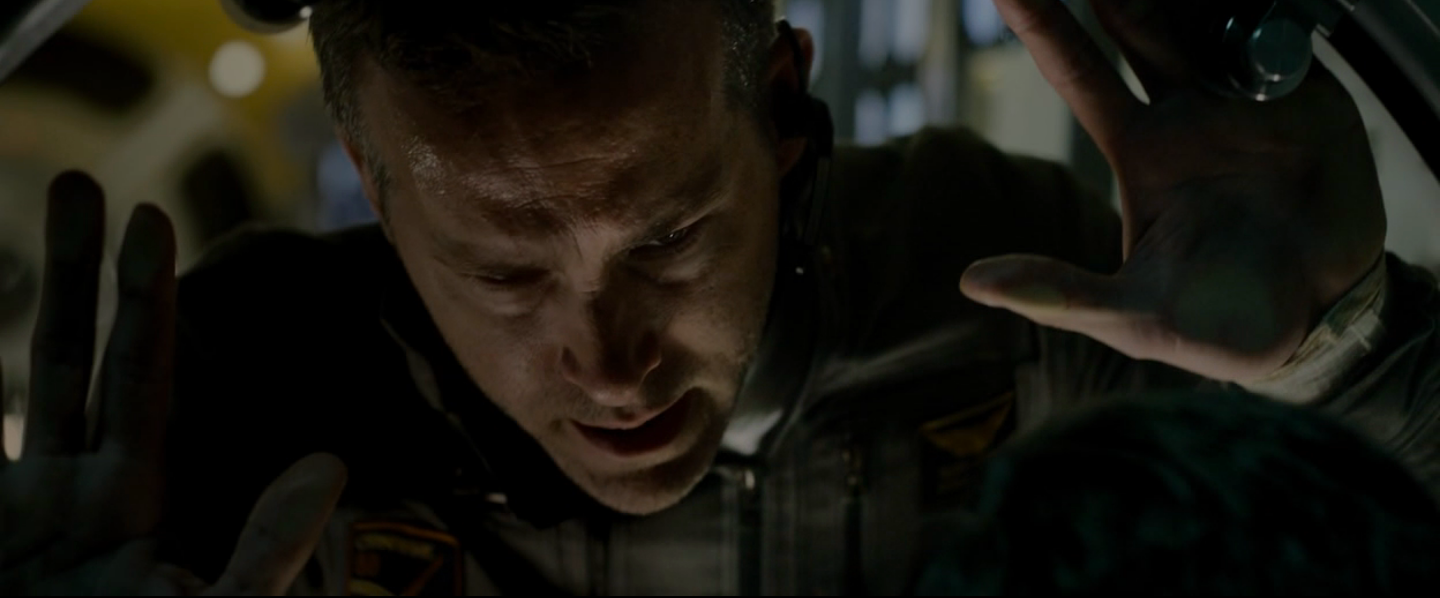
Space’s claustrophobic aspect (for more on claustrophobia in Life check out this THR interview with director Daniel Espinosa) points to an obvious but uniquely potent aspect of these films. It’s something rather shockingly illustrated in Pandorum. In the film, Earth is no more, and a huge ship (the Elysium ) has been sent to populate Tanis, an earth-like planet. Pandorum centers on a Corporal Bower (Ben Foster) who wakes up from “hypersleep” to find the Elysium disabled and must make his way through the mutant-inhabited ship to get the power back on. At the film’s end, Bower and Nadia (Antje Traue) find themselves on the bridge of the Elysium and see, through the window, a large, aquatic creature. They’re not in space. They’re under water. The ship crashed in Tanis’s ocean sometime before the film began.
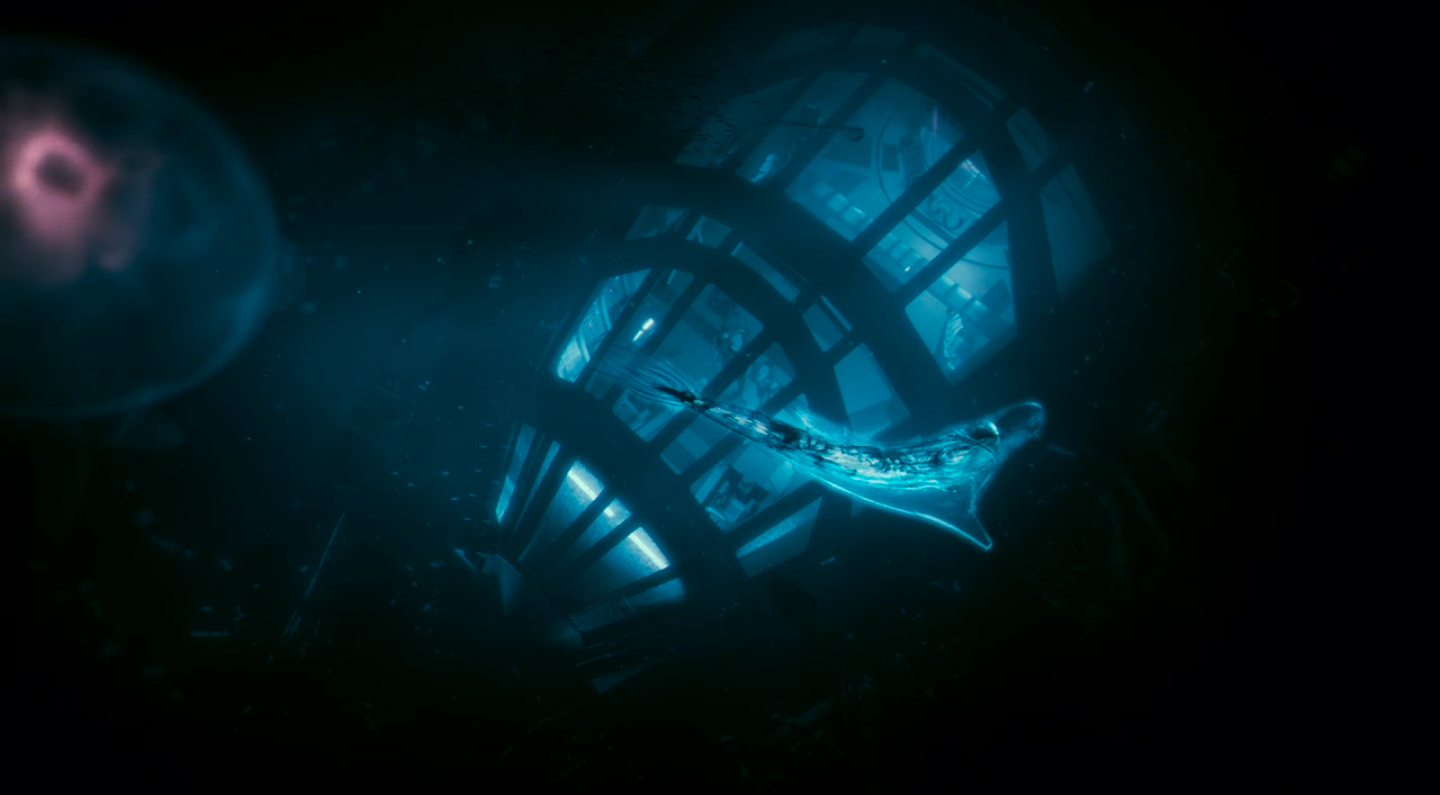
It wouldn’t be controversial to say that space movies are ship movies (or, in some cases, station movies like Life) but the big surprise at the end of Pandorum demonstrates just how material this is to the film experience. It’s a movie that sells itself as a space movie, that feels like a space movie, but that technically isn’t one (though its twist is assisted by a smattering of flashbacks to actual space travel). Humans in space are always in a container, usually a ship. As viewers, we’re so accustomed to ships that we’ll see “space” when all we’re shown is glowing halls and metal chambers. Space horror is ship horror.
The stresses and obstacles of ships and ship life are then fundamental, recurring elements of space horror. The close quarters, the need for atmosphere, resources, power, the material reality of the ship, these shape every film discussed above. With the occasional intrusion of the outside environments and threats of space, the experience of space is always crucially the closed world of the ship. The experience of space is to be cut off from it. And a ship’s precise location—floating in space or sunk beneath an ocean—often doesn’t matter. The ship’s the thing.
The psychological strain of life aboard a space ship—constrained, claustrophobic, light-years away from family—might be a recurring theme of most movies set in space, but the full weight and possibilities of these mental pressures are especially suited to horror. Psychological pressure, mental events, and madness arise again and again in these movies. Close-quarters fights; panicked, fateful breaches of contained spaces; identity dissociation; amnesia; a vision of a wife’s suicide breaking the mind (and letting in an evil entity); an apocalyptic vision turning the mind against humankind—these are the mental ravages of horror set in space. Space travel engenders an extreme form of cabin fever where we’re not merely cooped up, but the world outside is deadly and the comforts of normal life feel impossibly far away. A spaceship might function as a kind of floating Overlook Hotel, a good place to lose one’s mind entirely.
Confined in a spaceship, an uninhabitable environment always threatening to find it’s way inside, it’s no wonder that we miss earth. We want to see our families, to see strangers, to put our feet on the ground. At the same time, floating through the uncaring, hostile void brings into view the smallness and irrelevance of human life. These two feelings—desiring home and apprehending our smallness, our fragility—make space a good vantage point from which to contemplate the end of human existence. The apocalypse is a recurring theme in sci-fi, but it fits here too, in horror. Whether space horror movies ultimately offer a measure of hope or not, they imagine a dying sun, a giant ship carrying humanity away from earth after environmental collapse, and a man-consuming alien—after every effort has been made to keep it in space—making it down to earth in an escape pod. We’re confronted by horrors that threaten human existence itself. This exact kind of stakes raising isn’t quite present in Event Horizon. Earth and humanity are never directly threatened. Though consider the situation they’ve entered into as Dr. Weir (Sam Neill) describes it:
I created the Event Horizon to reach the stars. But she’s gone much, much farther than that. She tore a hole in our universe, a gateway to another dimension. A dimension of pure chaos, pure evil. When she crossed over, she was just a ship. But when she came back, she was alive.
The film at least flirts with an existential threat—a Hell dimension bleeding into our own—not to our planet exactly, but to our universe.
Space horror might be more completely characterized as a subgenre if we had more time and watched more movies. We can say here that space is a distinctly potent setting for horror. Space offers horror both the freedom and possibility of science fiction and extreme, mind-collapsing cabin fever. And it’s a vantage point from which we can contemplate—floating, alone, in all its vastness—the end of all of us.
Horror Writing Elsewhere
This week I'd like to recommend Mary Beth McAndrews's piece on Black Christmas (1974) and the figure of Olivia Hussey's Jess—a character who asserts her right to bodily autonomy in the face of patriarchal pressure.
At the bottom of the article she links to the National Network of Abortion Funds. Please think about donating. I have.
Dead of Night has no publication schedule. Sign up to receive new essays about horror cinema in your email inbox.